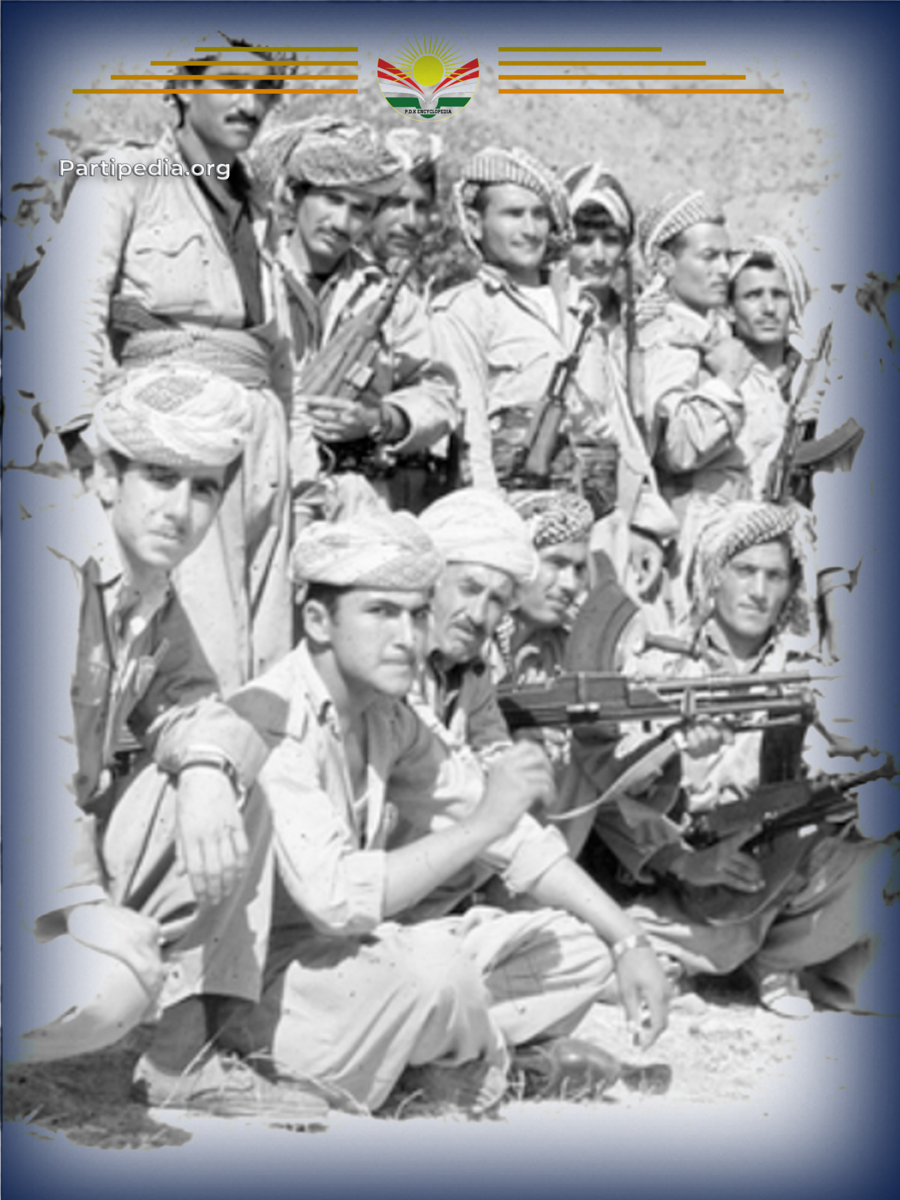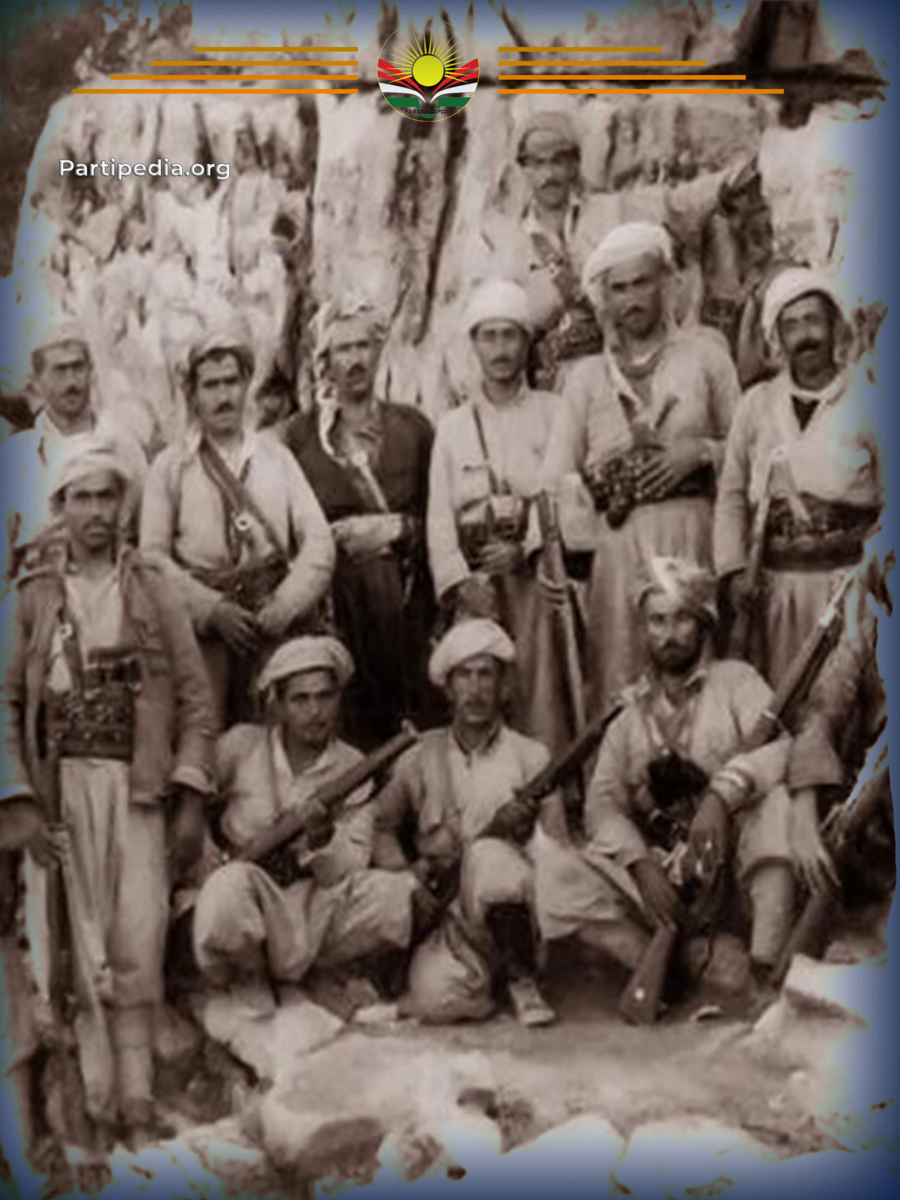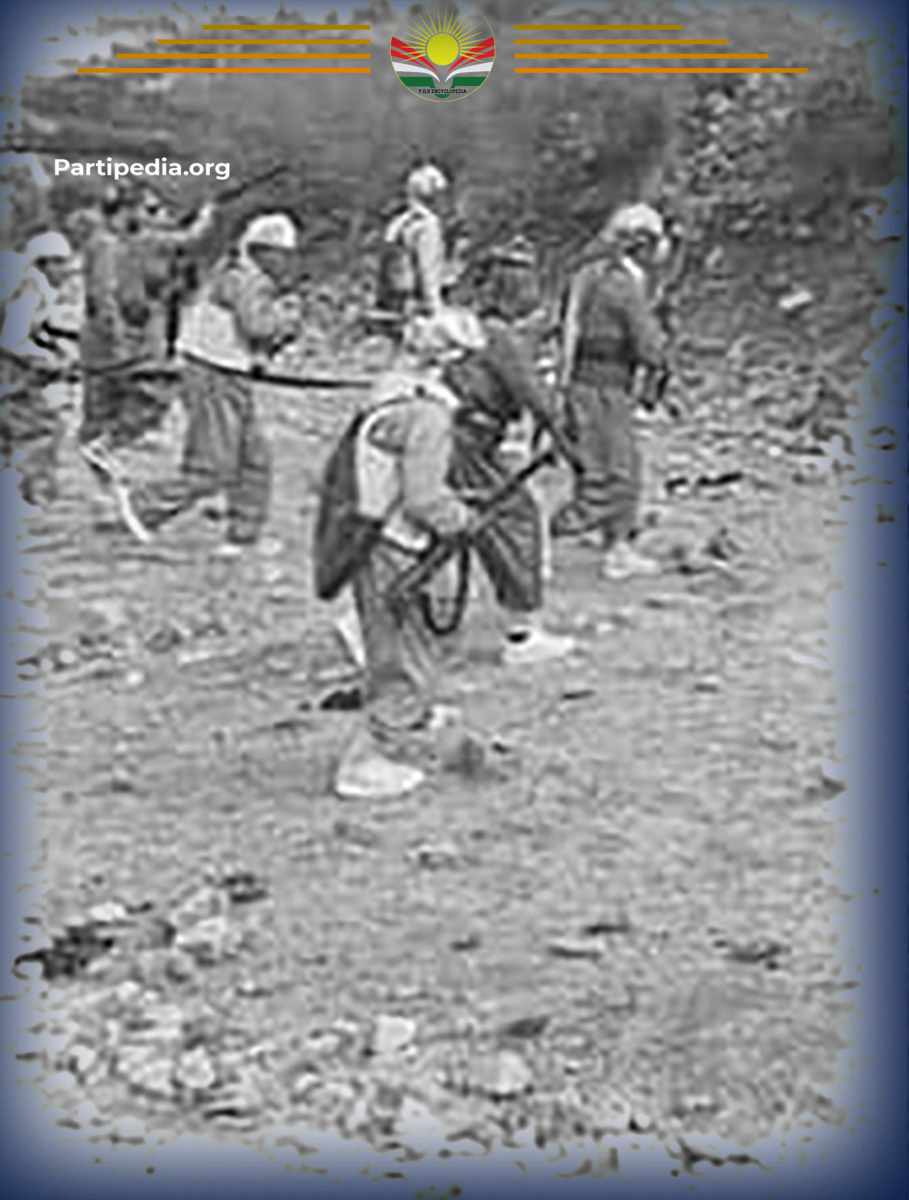Months after the outbreak of the September Revolution, Abdul Karim Qassim's government launched a series of attacks on the areas under the control of the revolution, with the help of mercenaries (jash). But the Peshmerga always resisted them and defeated their attacks. The Legend of Batufa, which took place on May 21, 1962, lasted for 45 days. As a result, the government retreated with dozens of dead officers and soldiers and withdrew without any considerable achievement.
Batufa was one of the areas that was attacked by the Iraqi army since the beginning of the revolution. The Iraqi army began its offensive on the area in May 1962. A large number of soldiers and mercenaries(JASH), supported by tanks, artillery, armoured vehicles and air force under the command of Colonel Majid al-Sabawi, who was the commander of the government forces in Badinan. The government's offensive was launched on May 21 from Zakho to capture the headquarters of the first Force in the Barwarian region, while a large geographical area of Badinan had fallen under the control of the revolution. Barzani also headed to Soran to spread the revolution to the other areas. The Kurdistan Peshmerga forces, which were organized in groups, were armed with light weapons. From the beginning of the revolution, they were armed with British rifles and fought against the huge and advanced Iraqi army. The Zakho region was ruled by the commander of the force, Isa Suwar, and his assistant, Ali Halo.
The Iraqi army continued its offensive for 45 days, attack after attack. However, the Iraqi army was unable to move its forces from the Zakho-Batufa highway to the surrounding villages. In the heat of the battle, a soldier joined the ranks of the revolution with a mortar shell (Aqda 3). The newly joined soldier changed the direction of his mortar barrel, turned to the Iraqi army, and began shelling them. This unexpected move altered the course of the battle and even hindered the movement of aircraft transporting troops to the battlefield. The soldier's shelling of the landing sites made it challenging for the troops to land safely.
The Iraqi army launched more than ten attacks on the villages of Kalkhwar, Dahli and Khezaw, but could not reach them, so it began to shell them intensively. As a result of the shelling, the villagers suffered heavy damage from the collapse and burning of their houses and evacuated the villages to protect their lives. The mercenaries (jash) also attacked the village of Beghabari; although the village was evacuated, but the Peshmerga forces did not allow them to reach them and defeated the attack, although two houses of the village were burnt by the mercenaries.
In the village of (Ava Genine) near Batufa, the government army launched an attack. However, the Peshmerga forces, led by Isa Suwar, made a promise to prevent them from achieving their goals. Despite the government forces reaching the Batufa military base, the Peshmerga successfully halted their advancement. The Peshmerga worked hard to keep the government forces at bay, but they eventually had to surround them. The government forces attempted to break the siege and execute their plan, but their efforts were futile. This led to a continued fight resulting in the death of the government forces' commander, Colonel Majid al-Sabawi, and a number of soldiers. After a 21-day stay in the area, the Peshmerga allowed the government forces to return to Zakho. With the withdrawal of the government forces, the threat to the first force headquarters in Zakho dissipated.
The Iraqi army suffered an estimated 200 dead and wounded in their continued 45-day offensive, and They included Majid al-Sabawi and several other officers, as well as the destruction of several military vehicles and the shooting down of a plane near the village of (Avagenine). After the end of the fighting, 5 Peshmergas were martyred and The martyrdom of two citizens who were in the National Defense Force supporting the Peshmerga.
Resources:
-
ئارى کەریم: چەند لاپەڕەیەکى زیندوو لە شۆڕشى ئەیلوولدا، چاپخانەى خەبات، دهۆک ١٩٩٩.
-
مسعود بارزانی: بارزانی و بزوتنەوەى ڕزگاریخوازی کورد، بەرگی سێیەم، بەشی یەکەم، شۆڕسی ئەیلوول ١٩٦١-١٩٧٥، چ: یەکەم ٢٠٠٤.
-
هۆژین مەسعود سەرنى: شورەشا ئیلونێ ل دەڤەرا بەهدینان ١٠٦١- ١٩٧٥، چاپى یەکەم، ٢٠١٨.
-
حاجى میرخان دۆڵەمەرى: گەڕان بەدواى دادپەروەریدا، بەرگى یەکەم، چاپى دووەم، چاپخانەى اسراء، تاران، ٢٠٢١.
-
شەوکەت مەلا ئیسماعیل حسن: ڕۆژانێ لە مێژووى شۆرشى ئەیلوول، چاحى یەکەم، هەولێر، ٢٠٠٧.








